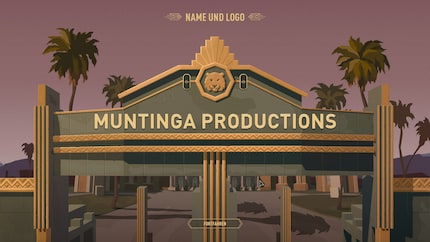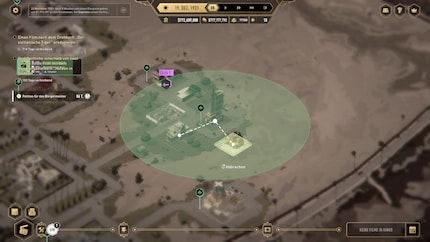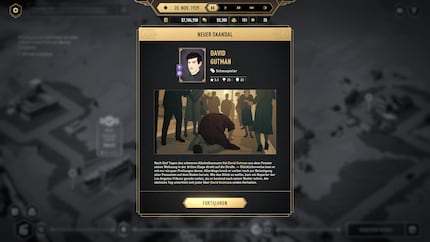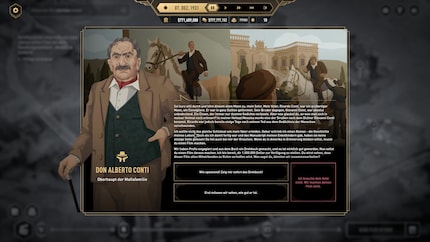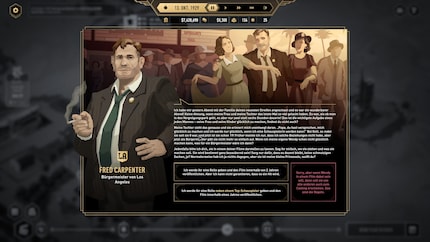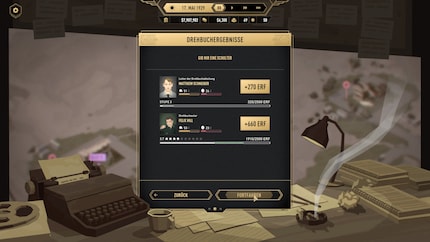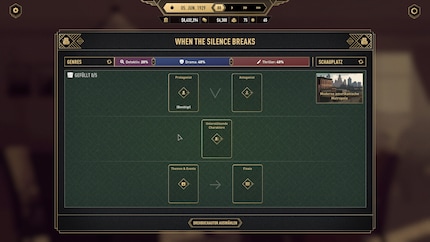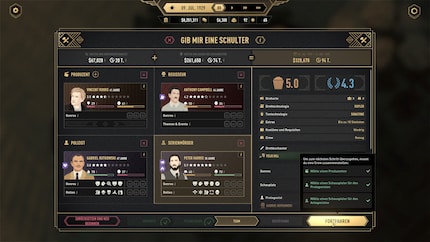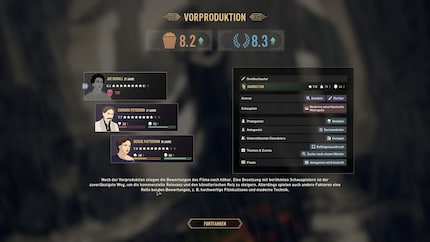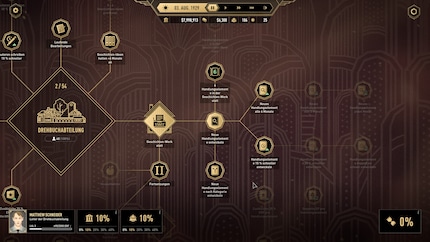
Background information
"Rimworld" was yesterday? This is how "Ascent of Ashes" fares
by Kim Muntinga

I took over a film studio in Hollywood Animal – and found out just how brutal and bitter Tinseltown can be.
In the first few hours of Hollywood Animal, it becomes clear that the game isn’t about creative vision – it’s about sheer survival. It sees you take over a bankrupt studio with a half-finished film, a scattering of old buildings and a small team running more on hope than on competence.
But the game doesn’t give you time to be sentimental. If you want to survive, you’ve got to work. Not only that, but you have to decide whether to swim with or against the tide. All in an industry that’s as corrupt as it is creative. This concept works pretty well at the beginning of the game.
At its core, Hollywood Animal is a classic construction game with a tycoon edge to it. It all starts with a stylised, isometric map revealing the few buildings that make up your studio premises: management, maintenance, distribution and post-production. Little by little, you expand, building a script department, props warehouse, sound studios and technical centres.
The construction system has a modular structure which initially feels familiar. You get to choose where you place buildings within defined zones of influence. These zones mark out coverage areas, map logistical dependencies and require spatial planning. There are no traditional production chains or route systems; buildings become functional the moment you finish constructing them.
While you’re shooting a film, Hollywood Animal repeatedly delivers both major and minor narrative escalations. These range from personal crises to political demands, intrigues and scandals. Far from just mere flashes, they have a direct influence on gameplay and force you to make decisions.
If the main actor in your film needs a stint in rehab or your set burns down, schedules and budgets are at stake. The decisions you take in these moments influence not just the film, but also your reputation and future opportunities.
At one point, my best screenwriter by far suddenly asks me to fire all my black employees by a certain date. If I don’t comply, he’ll leave the company. It’s a major moral dilemma. Every choice I make has its price, often going beyond my comfort zone.
Hollywood Animal is carried by its characters, be it the narcissistic director, the ambitious actress, the racist screenwriter or the shady financier. They often seem exaggerated, and every one has an agenda. You get to decide who gets promoted, ignored or sacrificed. These decisions can have serious consequences, including the destruction of careers, public scandals or even suicides.
The snapshot Hollywood Animal takes of that era oscillates between satire and tragedy. Its characters have their rough edges, strengths, weaknesses and goals, and your relationship with them determines whether your studio will rise or fall.
The game doesn’t shy away from depicting the dark depths of the industry, whether it’s toxic masculinity, racism or exploitation. Rather than doing so in a finger-wagging way, it scrutinises the power structures behind the glamour. In my view, this is the game’s main strength.
Producing a film in Hollywood Animal is a multi-stage process. It all starts with the screenplay. If you’ve unlocked and built a writers’ room, you can develop completely new material. If your site doesn’t have one, you’ll only have a bunch of vague ideas from your screenwriters to choose from.
The second option is particularly appealing because you have greater creative control and can design stories tailored to your studio. At least in theory. In practice, your choices and involvement opportunities are unfortunately still superficial. You can choose the genre, roles, some thematic accents and the finale, but more in-depth dramaturgical decisions are left to the game.
Once the script is finished and approved, it’s time for pre-production. At this point, you get to choose the cast and crew and organise props and technical equipment. Again, the game allows you to make a whole bunch of decisions ranging from the number of extras to the quality of the decorations. After a few movies, however, the novelty of this wears off and I start selecting everything automatically.
Meanwhile, the administrative wheels – deadlines, budgets and stress levels – spin in the background. Once everything’s prepared, it’s time for the actual shoot. And these don’t always go incident-free. As I covered earlier, internal or external factors can pop up at any time, requiring you to be flexible in your response.
The process of making your film ends with post-production and, finally, the release. Reviews, box office takings and the film’s social resonance are dependent on how cleverly you’ve planned in advance and which people and tech you’ve used to make your film.
A central element of Hollywood Animal is its research tree system. Each of the main buildings – from the writers’ room to pre-production to security – has its own skill tree. The management building even has four: PR, HR, Finance and Legal.
You can unlock new buildings, bonuses or features in each skill tree. At first, this sounds like it lends playful depth and freedom of choice to the game. When you look closer, however, weaknesses are revealed.
I often feel like I’m following a predetermined path instead of really shaping it. In that respect, Weappy Studio could’ve created more depth, more conflicting goals or even exclusive ways to adapt the development of players’ studios more closely to their strategic style.
Another downer is that some options in the research tree are currently still locked. Apparently, they’ll be made available «in a later version». Though this isn’t unusual for an early access title, it still leaves a bland aftertaste in my mouth.
The visual design underlines the melancholy tone of the game. In the isometric perspective, your studio unfolds like a diorama, characterised by Art Deco architecture, soft sepia tones and subtle shadows. Cars liven up the streets. Apart from that, the look is deliberately minimalist – more style than spectacle. It’s a good fit.
The soundtrack rounds everything off. Swing and jazz arrangements, orchestral overtones and classic Hollywood strings form a subtle background to the action. Music and atmosphere melt together in this journey through time – but the nostalgia always smacks of something a little darker.
Hollywood Animal was provided to me by Weappy Studio. The game has been available in early access on PC since 10 April.
My interests are varied, I just like to enjoy life. Always on the lookout for news about darts, gaming, films and series.
Interesting facts about products, behind-the-scenes looks at manufacturers and deep-dives on interesting people.
Show allWelcome to Los Angeles in the year 1929. Silent films are dying out, sound films are on the rise – and I’m right in the middle of the action. As the world’s lurching into the Great Depression, I’m building my own film empire in the shadow of the Hollywood Hills. Sound romantic? Think again. Hollywood Animal, the new early access game by Weappy Studio (known for This is the Police), soon turns out to be a dark reckoning with Tinseltown. It’s something between a strategy- and a construction game, a narrative simulation and a moral balancing act.
